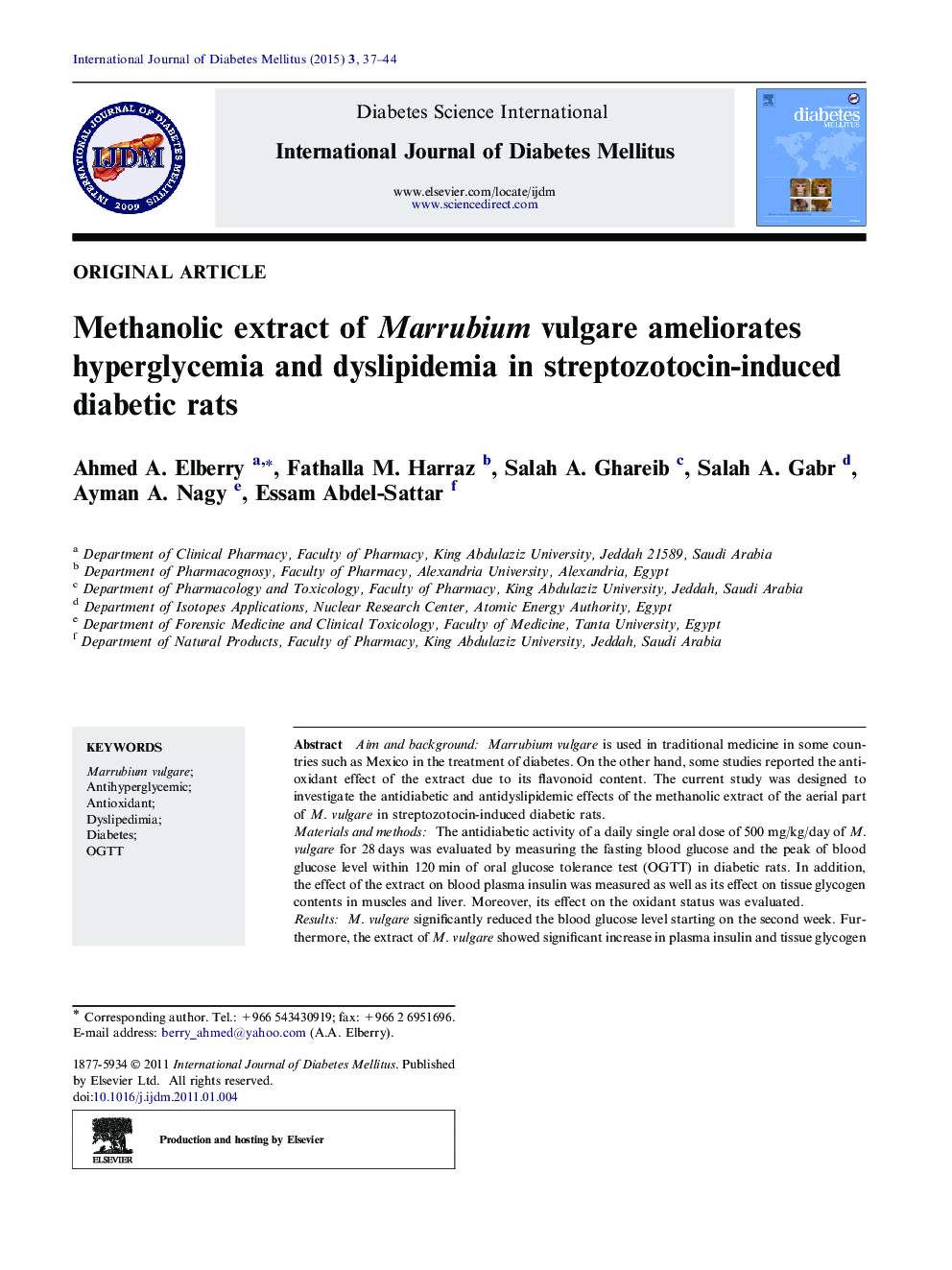| Article ID | Journal | Published Year | Pages | File Type |
|---|---|---|---|---|
| 3270393 | International Journal of Diabetes Mellitus | 2015 | 8 Pages |
Aim and backgroundMarrubium vulgare is used in traditional medicine in some countries such as Mexico in the treatment of diabetes. On the other hand, some studies reported the antioxidant effect of the extract due to its flavonoid content. The current study was designed to investigate the antidiabetic and antidyslipidemic effects of the methanolic extract of the aerial part of M. vulgare in streptozotocin-induced diabetic rats.Materials and methodsThe antidiabetic activity of a daily single oral dose of 500 mg/kg/day of M. vulgare for 28 days was evaluated by measuring the fasting blood glucose and the peak of blood glucose level within 120 min of oral glucose tolerance test (OGTT) in diabetic rats. In addition, the effect of the extract on blood plasma insulin was measured as well as its effect on tissue glycogen contents in muscles and liver. Moreover, its effect on the oxidant status was evaluated.ResultsM. vulgare significantly reduced the blood glucose level starting on the second week. Furthermore, the extract of M. vulgare showed significant increase in plasma insulin and tissue glycogen contents. The antidyslipidemic effect was demonstrated by a significant reduction in plasma total cholesterol (TC), triglycerides (TG), and low density lipoprotein-cholesterol (LDL-C), while the cardio-protective lipid, high density lipoprotein-cholesterol (HDL-C), was increased.ConclusionThe present data suggest that M. vulgare’s methanolic extract has antihyperglycemic with antidyslipidemic effect. The protective effect of the extract may be in part due to its antioxidant activity.
